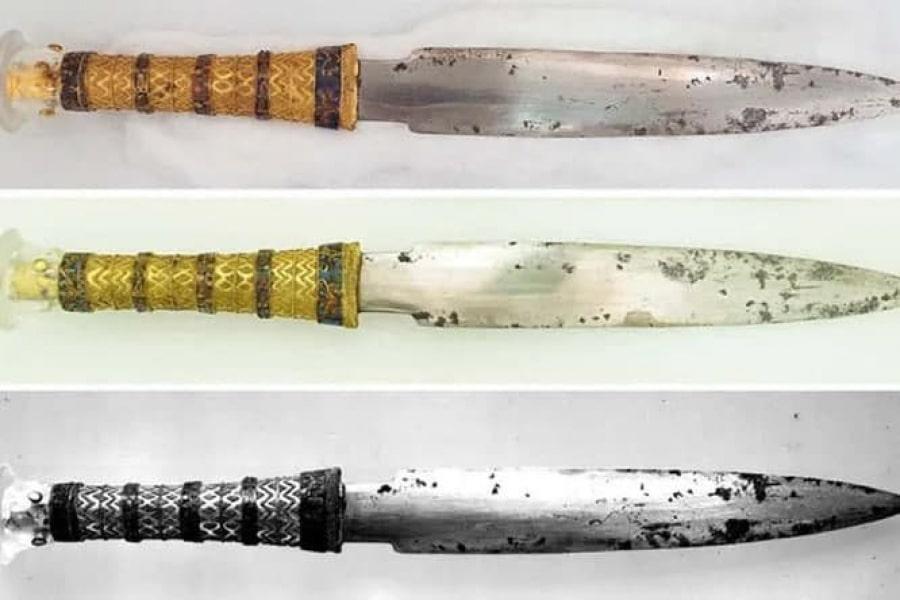Japanese scientists have conducted an X-ray scan of the dagger found in Tutankhamun’s tomb to determine how this object was made, whose metal – as confirmed in 2016 – was derived from a meteorite. According to the new study, the dagger was made by low-temperature forging, but it was not forged in Egypt. The scientists’ article was published in the journal Meteoritics & Planetary Science. The 35-centimeter dagger was discovered by archaeologists in Tutankhamun’s burial chamber in the Valley of the Kings in the 1920s, among other treasures buried with the pharaoh. Its blade was made of metal, but scientists were puzzled by the fact that the Iron Age began a century after Tutankhamun’s death, and the blade was barely touched by rust.
Gradually, researchers came to the conclusion that the iron objects that preceded the widespread use of relevant knowledge of metallurgy were forged from meteorite iron – pieces of metal that fell from space and processed on Earth. Such items were highly valued both in Egypt and abroad. A study from 2016 confirmed the probable meteorite origin of the dagger metal, but questions remain about the technology of its manufacture. Researchers have now studied the structure of the blade at a microscopic level using X-ray fluorescence analysis and found iron, nickel, manganese and cobalt. Sulfur, chlorine, calcium and zinc were also found in the blackened spots on the blade. No less interesting than the presence of certain chemical elements was their distribution, which showed that the dagger was made of octahedrite, which belongs to the most common structural class of iron meteorites. Archaeologists have unearthed the ruins of China’s oldest academy, dating back to the 4th century BC. “We found small black spots on the surface of the dagger,” said Tomoko Arai of the Chiba Institute of Technology in Japan, one of the study’s authors. “At first we thought it was rust.” But it turns out that these are iron sulfides, which are usually found as inclusions in octahedral iron meteorites. ” below 950 ° C.
Although chemical analysis did not elucidate the origin of the dagger, scientists succeeded with a series of 3,400-year-old tablets known as the Amarna Archives, documenting diplomatic activity in ancient Egypt in the mid-14th century BC. – to understand that a dagger in a golden scabbard – apparently a rare accessory at the time – was given to Amenhotep III, Tutankhamun’s grandfather, by the king of Mitani, when the pharaoh married his daughter. So it is possible that Tutankhamun’s space dagger was a family heirloom received as a gift from abroad. The detailed analysis also showed that the precious stones in the handle of the dagger were placed in a way that was widely used in Mitania, but was not used at that time in Egypt itself.
The dagger is not the only object in Tutankhamun’s tomb made of this metal. The pharaoh also had a necklace with scarabs of molten quartz – this material appeared due to the fall of another meteorite in the Libyan desert.
Photo: The dagger found in Tutankhamun’s tomb. T. Matsui et al. / Meteoritics & Planetary Science












